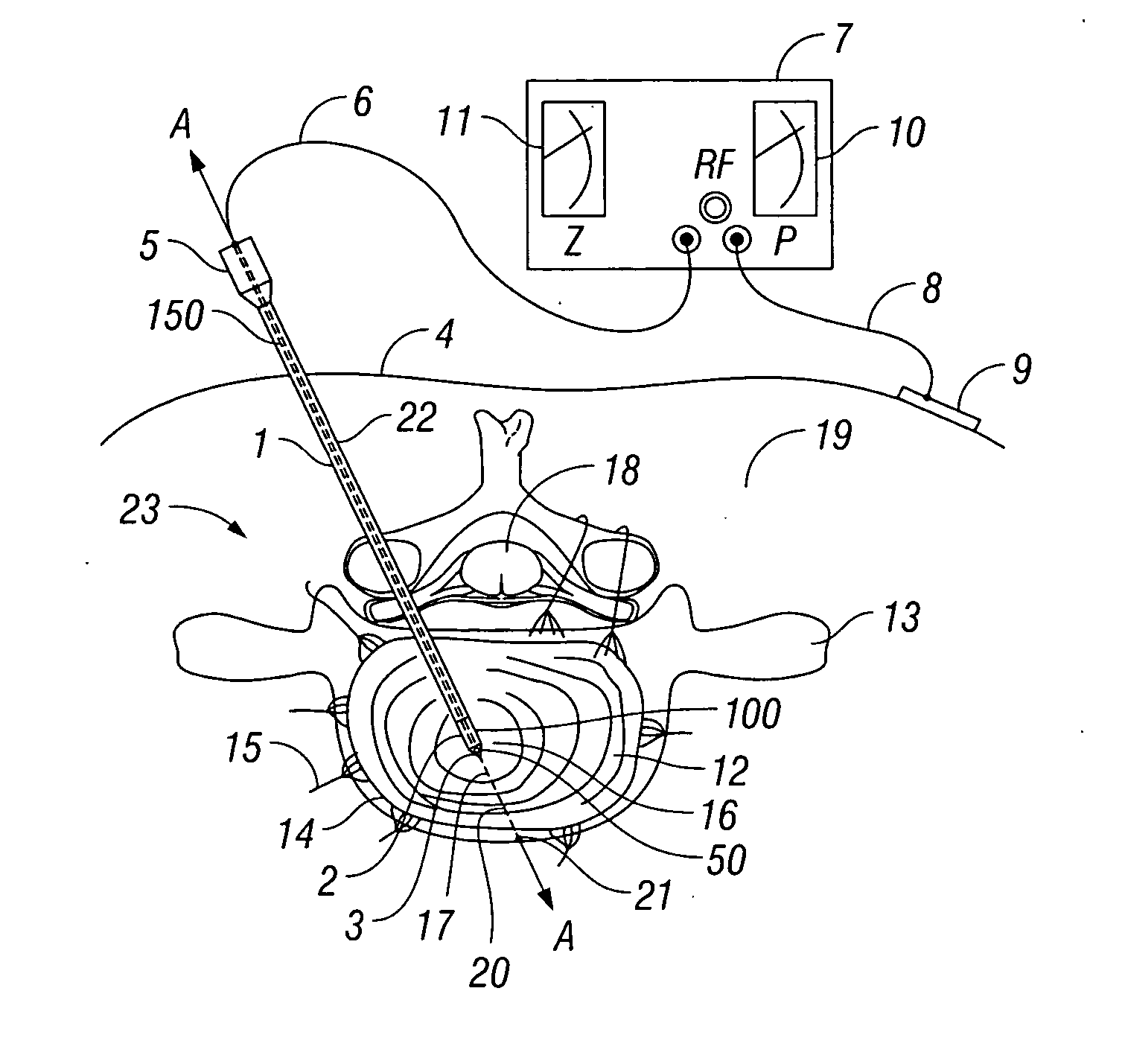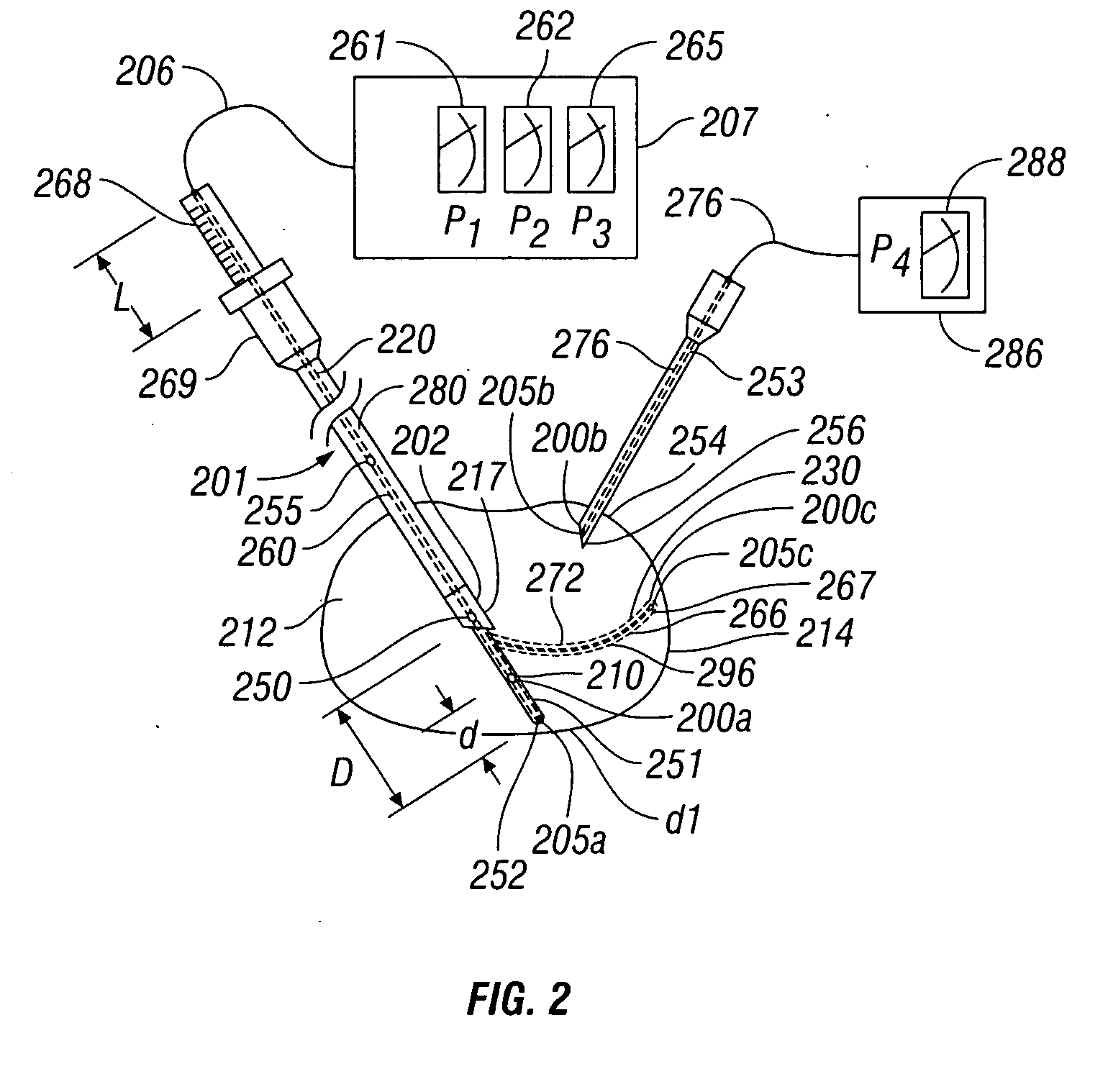Method and apparatus for monitoring disc pressure during heat treatment of an intervertebral disc
a technology of intervertebral discs and pressure monitoring, which is applied in the field of methods and apparatus for treating intervertebral discs, can solve the problems of large amounts of disability and labor loss, damage to tissue, and difficulty in achieving a comprehensive destruction of the nerves which innervate the discs, and achieve the effect of relieving patient pain associated with the discs
- Summary
- Abstract
- Description
- Claims
- Application Information
AI Technical Summary
Benefits of technology
Problems solved by technology
Method used
Image
Examples
Embodiment Construction
[0032] The present disclosure will be understood more fully from the detailed description given below and from the accompanying drawings of particular embodiments of the present disclosure which, however, should not be taken to limit the present disclosure to a specific embodiment but are for explanatory purposes.
[0033] Numerous specific details may be set forth herein to provide a thorough understanding of a number of possible embodiments of the present disclosure. It will be understood by those skilled in the art, however, that the embodiments may be practiced without these specific details. In other instances, well-known methods, procedures, components and circuits have not been described in detail so as not to obscure the embodiments. It can be appreciated that the specific structural and functional details disclosed herein may be representative and do not necessarily limit the scope of the embodiments.
[0034] Some embodiments may be described using the expression “coupled” and...
PUM
 Login to View More
Login to View More Abstract
Description
Claims
Application Information
 Login to View More
Login to View More - R&D
- Intellectual Property
- Life Sciences
- Materials
- Tech Scout
- Unparalleled Data Quality
- Higher Quality Content
- 60% Fewer Hallucinations
Browse by: Latest US Patents, China's latest patents, Technical Efficacy Thesaurus, Application Domain, Technology Topic, Popular Technical Reports.
© 2025 PatSnap. All rights reserved.Legal|Privacy policy|Modern Slavery Act Transparency Statement|Sitemap|About US| Contact US: help@patsnap.com



